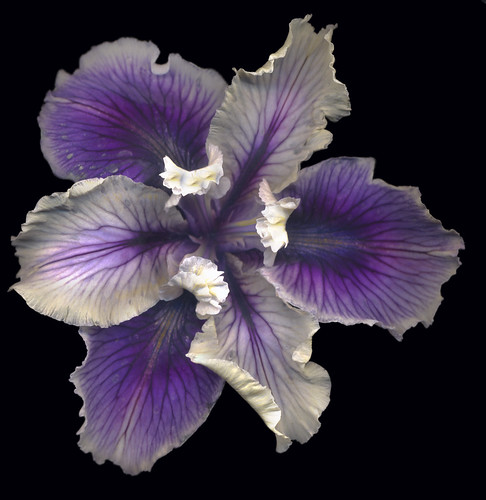
Ruffles Have Ridges, photo by Harold Davis. View this image larger.
I “discovered” (or perhaps “realized” would be the better verb) that there’s no reason I can’t combine flatbed scans at different exposures using hand HDR techniques. This Iris is from three flatbed scans.
No magnificent piece of equipment, the flatbed scanner is an older Epson 1660. Even so, it delivers wonderfully high resolution by camera standards (although of course there is no lens). Add to this the fact the software that comes with the scanner provides an RGB tone curve adjustment, a histogram that you can shove to the right or left, and a levels adjustment, and there’s plenty to play with.
To facilitate the capture, we constructed a black box, open on one side. I placed the Iris, fresh from the garden, face down on the scanner, and placed the black box over the Iris. I still had to mask out the background in Photoshop to fill it with true black, and (as always with scans) there was quite a bit of dust spotting.
The fun thing: this is really a digital era arts & crafts project, and pretty easy to do for anyone.
Capture: three combined RGB Epson 1660 flatbed scans at 1:1 and 3200 dpi.
Related story: Iris Scans; Revelation and Hiding; Nautilus on Black.